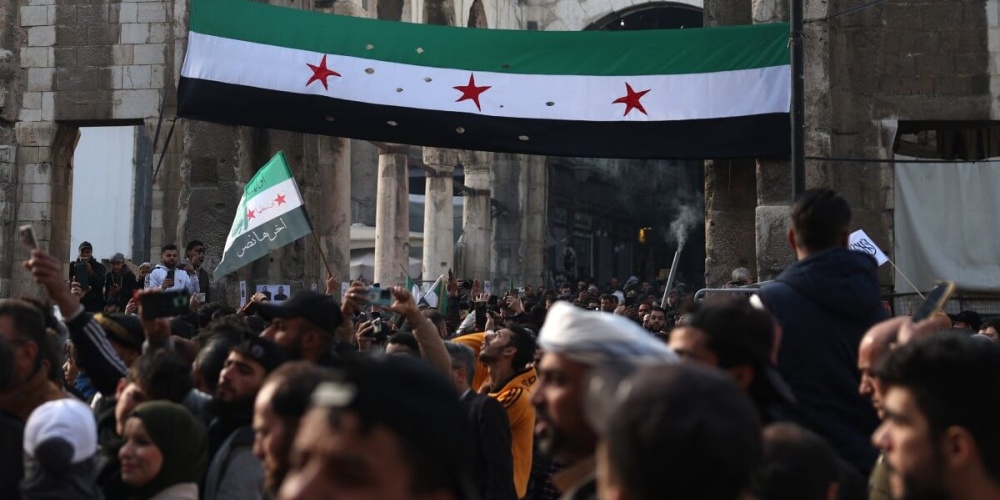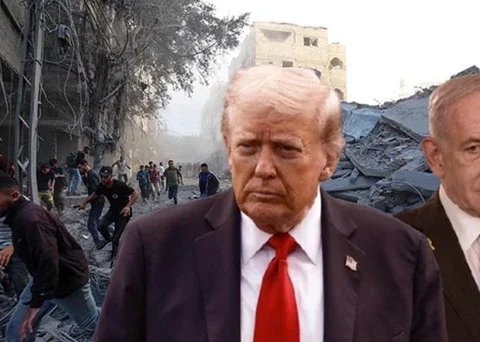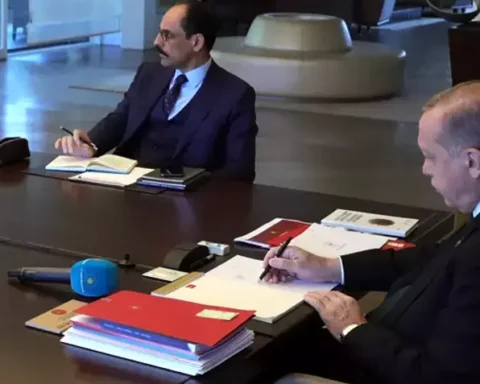When regime change occurred in Syria, Ankara’s fundamental expectation was quite clear: the integration of all armed elements in the country into the national army, the unification of regional structures with Damascus, the consolidation of the country’s unitary structure, the constitutional guarantee of the rights of all social segments, and the provision of political participation.
Within this framework, it was envisioned that the Kurdish issue would be resolved both within its own borders and within the new structure of the Syrian state. However, these expectations have not yet been realized. The SDF’s resistance to integration, the cancellation of the Paris talks, the new positions of the Druze and Alawites, and the emphasis in U.S. rhetoric on a “unitary but inclusive solution” have further deepened the issue. Washington aims to make the structure in the northeast of the country permanent by supporting the SDF’s demands for autonomy with limited administrative arrangements, but the sociological basis for this is a matter of debate.
It is worthwhile to revisit the current situation and the tension between Ankara’s expectations and the reality in Syria. It is important to assess the possible scenarios, the associated risks, and potential ways out.
Positions of Organized Structures
It is known that the emergence of the new situation in Syria has been influenced by organized structures, Israel, figures controlling international drug trafficking (notably a rebel Druze leader), and remnants of the Baath regime. These circles engage in two primary activities. First, they present their own demands, expectations, and interests as those of the people. Second, they harden the political climate through rhetoric that triggers the possibility of conflict. The purpose behind these two activities is understood to be the prevention of public debate and questioning of the organization’s stance and the priorities it imposes.
Two different attitudes emerge in managing the situation created by these structures.
The first is to overemphasize the tension created by the organizations and other mentioned elements—tension that is not genuine—and to adopt a hardened stance. This attitude both delays the public’s opportunity to question the imposed agenda and contributes to their alignment with organized structures. In fact, this is a method frequently employed by such organizations and networks. This picture is clearly known, and if attitudes are shaped accordingly, the public’s ability to distance itself from these organizations and networks increases. This is precisely the picture emerging in Syria. It must be taken into account.
Ankara’s Framework
The issues that Ankara regards as meaningful and important in its Syria policy can be grouped under five distinct headings.
First, Ankara feels the necessity of preserving Syria’s unitary structure and territorial integrity due to the security problems that could arise from potential fragmentation and division, and the capacity of these problems to affect Ankara directly.
Second, the various armed elements that emerged during the civil war must be incorporated into the Syrian army, and no armed groups should exist outside the Syrian army.
Third, in order to prevent the issues of social representation experienced during the Baath regime, political inclusiveness and pluralism must be ensured, and all social segments must be represented at both the local and central levels.
Fourth, Syrians who were forced to migrate to Türkiye during the civil war must be enabled to return to their country safely and with dignity, and their properties must be returned to them.
The fifth issue concerns the country’s economic development and reconstruction.
Realities on the Ground
The dynamics confronting the framework of issues that are important to Ankara are quite complex. These can be categorized under four distinct headings.
The first dynamic is the SDF prioritizing its organizational interests over Syria’s future. Rather than becoming part of the Syrian army, it seeks to maintain its armed presence and desires to govern the populations and territories under its control through its organizational power.
The second dynamic is the demands of other social groups. The Druze and Alawites, although for different reasons, are calling for expanded representation in response to centralized “oppression.”
The third dynamic involves internal social fault lines. More than fifteen years of war have eroded trust among communities. The Kurds, Druze, and Alawites advocate for a decentralized structure. Meanwhile, the Sunni Arabs, who constitute the majority of the population, are in search of a governance model that will spare them the exclusion, violence, extrajudicial killings, and lack of representation they experienced in the past.
The fourth dynamic concerns external actors. While the U.S. emphasizes inclusivity, Israel continues its attacks aimed at weakening the Sharif administration. Russia and Iran are seeking new opportunities to re-engage. Although Russia’s influence on the ground has diminished due to the war in Ukraine, Iran’s ambitions remain strong. Europe seeks to become an actor through refugee return initiatives and reconstruction funds. The Gulf countries—especially Qatar—are looking to support the transitional administration through economic development packages. This overall picture makes it clear that Ankara needs to conduct multidimensional regional diplomacy.
Possible Scenarios and Risks
When we compare the issues that are important to Ankara with the realities on the ground, three separate scenarios emerge.
The first scenario involves preserving the unitary structure while reaching a compromise that includes the devolution of local authority. This is a highly feasible scenario. The unitary structure would be preserved, but partial administrative powers could be delegated to local governments. The SDF would be gradually integrated into the national army. Constitutionally guaranteed representation and cultural rights would be granted to the Druze and Alawite regions.
The second scenario entails strict centralization. This scenario carries a high risk factor. The Damascus administration would suppress demands for autonomy and disband the SDF. Such a move could trigger renewed proxy wars and regional interventions.
The third scenario is soft partitioning/de facto federalization. However, this is not a scenario that would be acceptable to the Arabs—who constitute nearly 90% of Syria’s population—nor to Ankara or other Middle Eastern capitals.
The risks associated with these scenarios can be grouped under six main headings.
First is a security vacuum. As integration is delayed, certain terrorist organizations in the region may become active again, and local militias may gain strength.
Second, social tensions may rise. In particular, provocations based on sectarian and ethnic lines could spark new conflicts.
Third, political discord may increase. Differences in expectations among social groups may generate problems, damaging communication between parties and deepening the divide between them.
Fourth, the chaos in the country could intensify due to rivalries among external actors. If the U.S., Israel, Russia, Europe, and the Gulf countries intervene in the process with differing visions, the outcome could be new conflicts and greater chaos.
Fifth, the return process of refugees may be disrupted. The issue of Syrian refugees became one of the most hotly debated topics in domestic politics, especially after the 2024 local elections. This puts direct pressure on Ankara’s diplomatic and security strategies. If security and property guarantees cannot be provided, the postponement of the return of millions of refugees will continue to increase social and economic pressure—particularly in Türkiye.
The sixth and most important issue is the institutional capacity and inclusiveness of the transitional administration. If the transitional government cannot establish a strong bureaucracy and an inclusive political vision, it will be very difficult to implement any of the aforementioned scenarios.
Integration Based on Unitary Structure + Devolution of Local Authority
The most viable scenario for Türkiye and Syria is a model that preserves the unitary structure while devolving administrative and cultural authority to local governments. In this way, the demands of the Kurds, Druze, and Alawites would be met with constitutional guarantees, Türkiye’s border security would be ensured through joint mechanisms, and the necessary security and administrative conditions for the return of refugees would be established. The “solution based on devolution of authority to the local level” is, in fact, a concept that reflects the principle of decentralization. Instead of the central state retaining all powers, certain administrative and cultural powers would be delegated to local administrations (such as municipalities, regional councils, and provincial councils).
The main features of this structure are as follows: the unitary state is preserved—that is, the country would have a single flag, constitution, and army. At the same time, it would open decision-making space at the local level. Many issues related to municipal services would fall under the responsibilities of local councils. In this sense, it differs from federalism because sovereignty is not divided; only some powers are transferred to the local level. These are “enhanced local administrations,” similar to those discussed in Türkiye within the framework of metropolitan municipality regulations. In other words, when we refer to a “solution based on the devolution of local authority,” what is meant is the idea that Syria should remain a unitary state, but strong local governments should be established throughout the country. This could also serve as a positive example for the democratic transformation of the Middle East.
The Way Out: Preserving the Unitary Structure and Transferring Authority to the Local Level
This possibility would represent a positive way out, both in terms of Syria attaining a stable structure and in terms of addressing the concerns of the country’s neighbors. Concentrating all authority at the center or transitioning to de facto federalism would increase neighboring countries’ security concerns and threaten Syria’s territorial integrity. Therefore, revising expectations and adopting a vision that preserves the unitary structure while allowing for local representation would not only alleviate the security concerns of regional countries, but also accelerate Syria’s exit from chaos and make a constructive contribution to its reconstruction.
Such a model would mean three concrete gains for Ankara: ensuring border security, enabling Syrians to return to their country safely and with dignity, and securing a stable governance structure in Syria.
Understanding and Support
Upon returning from Qatar, President Erdoğan responded to a question regarding the integration of Damascus and the SDF by saying:
“A new era has now begun in Syria. However, as you know, Israel is pressing Syria from the south and trying to wear it down. They are making efforts to extract something from there with a ‘divide and rule’ mentality. Despite all this, a government that prioritizes embracing everyone in Syria is currently in power. This has shifted the balance in Syria, and there are those who cannot stomach this. The most correct, most prudent, and most appropriate course for Syria’s conditions would be for everyone to understand this new situation well and take steps accordingly. Now I would like to ask you: Why lose through conflict when we can all win together through peace? Let’s focus on this. We must move forward without falling for provocations, without going down the wrong paths, and without falling into the traps of those who feed on Muslim blood. We stand with all Syrians, without distinction.”
This meaningful response clearly reflects both an assessment of the situation and a firm stance toward understanding the country and supporting a solution.
In fact, it is essential to recognize that many of the events currently taking place in Syria are the result of a lack of democracy and democratic functioning/governance. The correct perspective is to view the diverse social anxieties emerging in the country as the pain and concerns caused by events that followed the fall of the dictator. It would even be accurate to interpret them as the negative emotional climate brought on by the absence of democracy. Ultimately, it is possible to overcome this negative condition. The way to do so is by trying to understand the existing emotions and concerns, and by supporting efforts toward a solution.
It would not be realistic to expect these problems to disappear overnight. This is because Syria is, for the first time, attempting to build a genuinely democratic system and a pluralistic governance perspective. With the proposed models—or similar ones to be developed—Syrians will begin to govern their country according to their own will for the first time. This process should be seen as the first step in Syria’s introduction to democratic governance and the emergence of democracy. The path to managing security concerns lies in developing empathy and offering support to alleviate the negative emotional state produced by the lack of democracy.
In an anecdote attributed to anthropologist Margaret Mead, she is asked, “What is the first sign of civilization?” Mead replies, “A broken thighbone that has been set.” A healed bone implies that someone cared for the injured person—bandaged the leg, carried them to safety, and looked after them until they recovered. In short, it underscores that civilization begins with helping someone during difficult times.
In Syria, everyone’s bone is broken. Healing requires patience and support.
Source: perspektifonline.com






